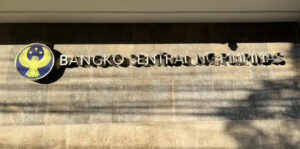YIELDS on the term deposits of the Bangko Sentral ng Pilipinas (BSP) inched higher on Wednesday ahead of the Monetary Board’s policy review this week.
Total demand for the term deposit facility (TDF) of the central bank amounted to P239.787 billion on Wednesday, a tad below the P240-billion offering but higher than the P228.414 billion in bids for a P260-billion offer a week ago.
Broken down, tenders for the seven-day papers reached P112.063 billion, higher than the P110 billion on the auction block as well as the P103.078 billion in bids for a P120-billion offering seen in the previous week.
Banks asked for yields ranging from 6.52% to 6.55%, a slightly narrower band compared with the 6.51% to 6.55% seen a week ago. With this, the average rate of the one-week term deposits went up by 0.18 basis point (bp) to 6.5324% from 6.5306% previously.
Meanwhile, the 14-day papers fetched bids amounting to P127.724 billion, above the P100-billion offer but below the P125.336 billion in tenders for a P140-billion offering a week ago.
Accepted rates for the tenor were from 6.5475% to 6.595%, narrower than the 6.54% to 6.6% range seen last week. This caused the average rate of the two-week papers to increase by 0.05 bp to 6.5741% from 6.5736% in the prior auction.
The central bank has not offered 28-day term deposits for more than three years to give way to its weekly auctions of securities with the same tenor.
Both the TDF and 28-day bills are used by the BSP to mop up excess liquidity in the financial system and to better guide market rates.
TDF yields rose ahead of the BSP’s monetary policy meeting on Thursday, Rizal Commercial Banking Corp. Chief Economist Michael L. Ricafort said in a Viber message.
A BusinessWorld poll showed 17 of 19 analysts expect the Monetary Board to maintain its target reverse repurchase rate at a 17-year high of 6.5% for a fifth straight meeting on Thursday.
The central bank raised borrowing costs by a cumulative 450 bps from May 2022 to October 2023 to tame inflation.
BSP Governor Eli M. Remolona, Jr. has said that the central bank may consider cutting interest rates once inflation firmly settles in the 3% area.
Headline inflation quickened for a third straight month to 3.8% in April. It also marked the fifth straight month that inflation fell within the BSP’s 2-4% target range.
Inflation averaged 3.4% in the first four months, still below the central bank’s 3.8% full-year forecast.
Mr. Ricafort said recent signals about higher for longer interest rates from US Federal Reserve officials also affected TDF yields.
US Federal Reserve Chair Jerome H. Powell on Tuesday gave a bullish assessment of where the US economy stands now, with an outlook for continued above-trend growth and confidence in falling inflation that, while eroded by recent data, remains largely intact, Reuters reported.
“I expect that inflation will move back down … on a monthly basis to levels that were more like the lower readings that we were having last year,” Mr. Powell said at a banking event in Amsterdam.
Though he said “my confidence in that is not as high as it was,” given faster than expected inflation through the first three months of the year, the US central bank chief said it remained unlikely in his view that the Fed would have to raise rates any further, even if the prospect for rate cuts has become less certain.
“I don’t think that it is likely based on the data we have that the next move that we make will be a rate hike,” Mr. Powell said. “It is more likely… we hold the policy rate where it is.”
The Fed’s benchmark policy rate has been held steady in a 5.25% to 5.5% range since July, and officials have largely dropped specific guidance on whether that might be reduced this year. — Luisa Maria Jacinta C. Jocson with Reuters






